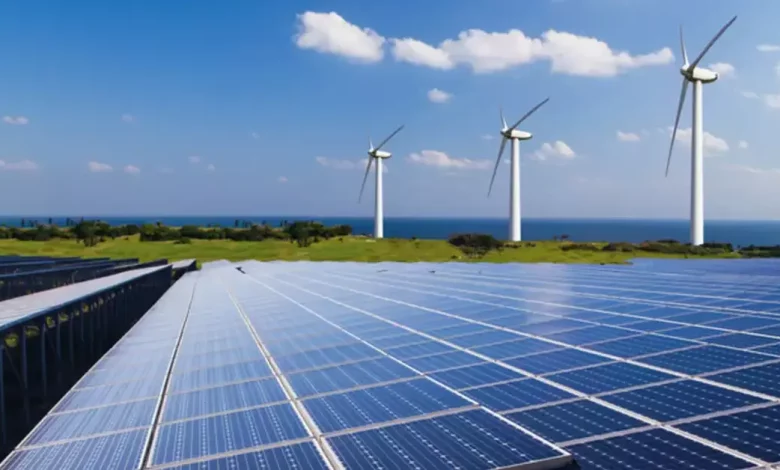T.N.’s renewable energy initiatives
Syllabus: Environmental pollution and degradation[GS Paper-3]

Context:
- Tamil Nadu has been at the forefront of renewable energy for many years, leading the way in wind power and branching out into solar and hydro projects.
- The state’s recent policy changes and ambitious goals, including Chief Minister M.K. Stalin’s aim for net zero emissions by 2050, demonstrates its dedication to promoting sustainable energy initiatives.
Renewable energy sector in Tamil Nadu:
- Tamil Nadu has been at the forefront of wind energy innovation since 1986, solidifying its position as a key player in the sustainable energy sector.
- The state has expanded its renewable energy initiatives to include solar power and potential hydro projects, further diversifying its green energy portfolio.
- The establishment of the Tamil Nadu Green Energy Corporation Limited (TNGECL) as a distinct entity underscores the state’s commitment to exploring and implementing various renewable energy strategies.
Current Status of Renewable energy in Tamil Nadu:
- Current green energy production capacity:
-
-
- Tamil Nadu generated a total capacity of 34,700 MW through green energy with wind, solar, hydro and co-generation as part.
- The most prominent ones are 10,500 MW from wind, 7,360 MW from solar, and 600 MW from hydro.
- Current projects and infrastructure development:
-
- There are a number of hydro-power projects operating along with a number of steps to increase the green energy transmission being undertaken.
- Among others, the Kundah pumped-storage hydro electricity project, expected to finish by 2025-26, is a remarkable investment.
- Along with the power transmission infrastructure development, as the setting up of a 765-KV sub-station at Virudhunagar is being executed, major sharing of electricity is happening to improve the distribution.
- Solar Power:
- The Kamuthi solar project in Tamil Nadu, which has a capacity of 648 MW, demonstrates the state’s dedication to solar energy.
- Additionally, incentives for rooftop solar power systems have led to lower prices for solar modules.
- Political reforms and future goals:
-
- Chief Minister M.K. Stalin announced a net zero target by 2050, emphasising the importance of power sector reforms
- Despite successes, challenges remain, including the need to balance thermal and renewable energy generation for grid safety.
Challenges and suggestions regarding renewable energy of Tamil Nadu:
- The Tamil Nadu Electricity regulatory commission is trying to improvise on the initiatives that will help in effectively handling the curtailment of wind and solar generation.
- One of the challenges that need to be resolved include the high network charges, the delays in payment to renewable energy developers and the need to incur some costs to upgrade to old wind turbines.
- Investments could be encouraged by providing attractive credit rates, financial management on an annual basis of wind energy and with the introduction of special feed-in tariffs.
Conclusion:
Tamil Nadu’s renewable energy initiatives show a commendable dedication to sustainable energy development, despite facing obstacles like grid balancing and the need for policy reforms.
Source: The Hindu
UPSC Prelims Practice Question:
Q.With reference to the Indian Renewable Energy Development Agency Limited (IREDA), which of the following statements is/are correct? (2015)
- It is a Public Limited Government Company.
- It is a Non-Banking Financial Company.
Select the correct answer using the code given below:
a. 1 only
b. 2 only
c. Both 1 and 2
c. Neither 1 nor 2
Ans: “c”





.png)



